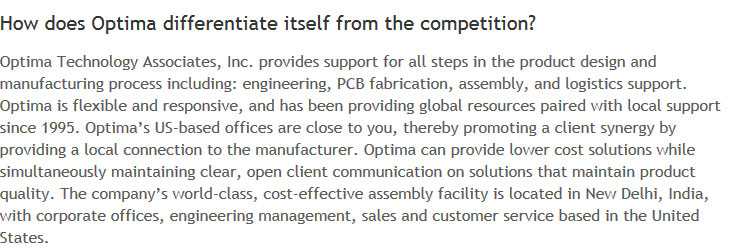What are Instrumentation & Controls?
Instrumentation & controls refer to electronic devices or assemblies used
to monitor, measure, manage or operate equipment, vehicles, machines and many other
products.
What are the benefits of Instrumentation & Controls?
The ability to control devices and systems remotely is one of the potential benefits
of instrumentation & controls. Heavy machinery, for example, can have control
panels located at a safe distance for operators—thereby reducing the risk of injury.
Instrumentation & Controls also make it possible for complex computations
to be calculated in fewer button pushes. Furthermore, instrumentation & controls
enable complex connections to be made in a simplified manner. They can also make
technical gear more user-friendly and thus usable to novice users, while requiring
little to no prior experience or training in engineering, IT and electronics.
What are the applications of Instrumentation & Controls?
Instrumentation & controls are quite useful to a wide variety of fields of
technology: medical, aviation, media, consumer electronics, computers (IT), etc.
Medical applications that utilize instrumentation & controls include items
such as defibrillators, heart rate monitors, and X-ray machines. The aviation industry
uses flight instrumentation and controls in many applications including altimeters,
turn and bank indicators, airspeed indicators, vertical speed indicators, heading
indicators, directional gyro’s, and artificial horizon indicators.
